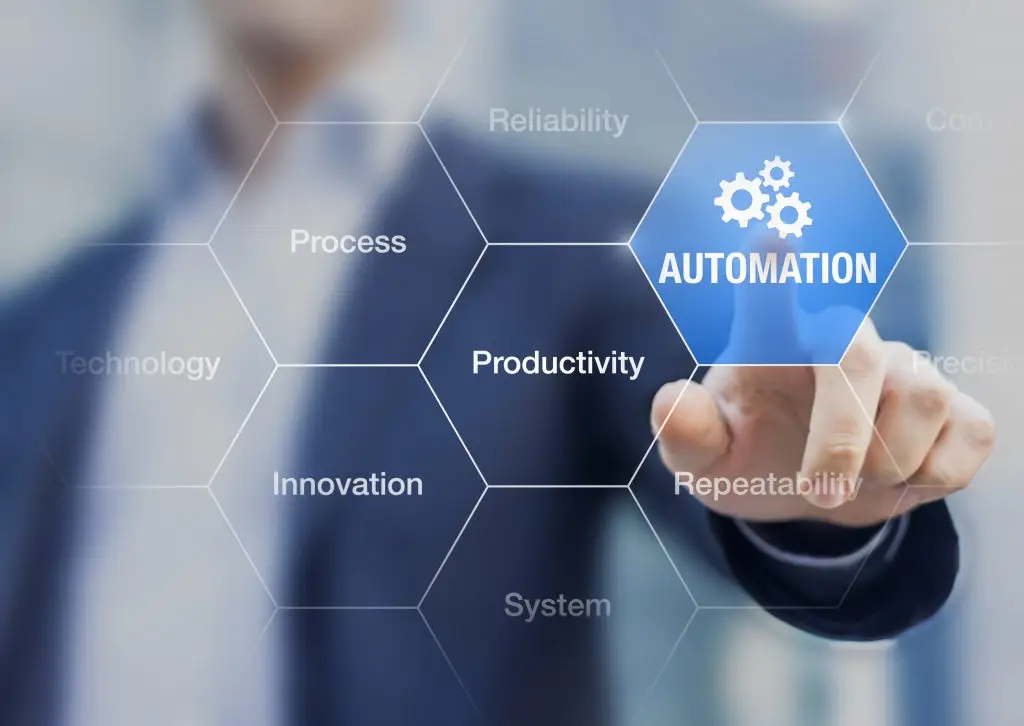Moving from paper to digital to enhance the mission
Government agencies have begun to make significant strides in their paperless journey. NT Concepts performs in the customer’s reality, then collaboratively designs and implements solutions like Robotic Process Automation (RPA) and Artificial Intelligence (AI) to move toward efficient, cost-effective digital data management.
This blog is the first in a series sharing our expertise, capacity, and experience with helping our clients take advantage of lowered costs, improved productivity, workforce optimization, and streamlined processes. In the series, we will share how we engage our Automation Philosophy, thoughtfully transforming programs from labor-driven to technology-driven.
Like most people reading this, I’ve been in the GovCon business for longer than I care to admit. Having worked in multiple roles, diverse programs, and with a number of government clients, I’ve come to realize that the basic component of every program is data. Acquiring data, processing data, storing data, securing data, maintaining data, analyzing data, providing data—data is power, a commodity and a necessity, and data management is the business we’re in.
Historically, we’ve managed data through labor-driven brute force. We receive (or worse, we produce!) hardcopy data, create a file, maintain the file, protect the file, move it around, retain it for a specified time, and eventually destroy the file. We keep our files secure in a super-sized facility that can accommodate the personnel and furnishings necessary to support our data management activities. Obviously, this comes with a pretty hefty price tag, especially when we are required to manage our clients’ data in a region with higher associated costs and increased competition for both labor and real estate. Add in a clearance requirement and high turnover in entry-level positions, and costs skyrocket.
Faced with rising costs and the need for secure options for data management, it’s no surprise that organizations are attempting to transition from labor-driven processes to labor-supported, technology-adaptive environments and beyond. In moving toward a digital environment, they resolve issues like material costs, labor-intense physical file management, high facility and labor costs, and the risk of loss or compromise of hardcopy materials. Yet even with the promise of greater operational efficiency, lower costs, and enhanced data security and integrity, many ‘traditional’ enterprises in the public and private sectors remain wedded to paper-based processes.
Factors promoting and prohibiting the digital shift
Given the obvious benefits that go far beyond the cost of paper and toner, going paperless seems like a no-brainer. So why is there still resistance to leveraging emerging technologies for data management? The answer is more complex than people and agencies wanting to do things “the way we’ve always done it”.
First, there’s simple technophobia. People don’t trust what they don’t understand, and not all of us are IT professionals. They worry their documents will get lost, or compromised, or altered by someone else. Second, there’s a fear that a paperless environment equates to the need for fewer resources. Another component is the comfort factor of holding, reviewing, and marking up paper documents; it’s what we’re used to. Bottom line, people and organizations are afraid of change. Folks, change is neither bad nor good. Change is different.
To make meaningful progress toward a digital data management environment, agencies must address the bias toward paper and the resistance to change, and develop mitigation strategies for the potential and perceived risks of operating within a paperless environment. The approach to this change need not be a sledgehammer; a subtle, collaborative, and well-communicated approach can be amazingly impactful.
In a recent Government Executive article regarding the reduction in the security clearance backlog, the author wrote, “The government has made significant progress on the backlog, and in large part due to relatively minor process changes.”
Committing to the transition away from hardcopy processes is just the first step in the transformation. Organizations need to consider how they will retrain and/or refocus their employees, ensure user adoption, and operationalize their new processes. Collaborating with your team and documenting the plans for these activities, with a timeline and milestones, is a great way to keep things on task and on time, and make sure you’re not missing any risks or opportunities along the way. By involving your team, they have some control over the pace and nature of the activities and are vested in a positive outcome.
Transforming paper processes
NT Concepts enjoys the challenge of transforming cumbersome, outdated paper-driven programs to dynamic digital data management processes. Our approach is to meet our clients wherever they are on the data management spectrum, develop an understanding and appreciation of their current state and their program objectives, and move with them at their pace to transform their program to a labor-supported, technology-driven, paperless environment.
In this blog series, we take a closer look at the journey from paper dependency to paperless success using continuous process improvement, inserting RPA, implementing AI and machine learning (ML) solutions for analytic augmentation and prediction, and managing a productive and happy distributed workforce. If you’re interested in learning more about the impact information referenced in this article, or have questions about how NT Concepts helps agencies to realize these high-value efficiencies, please reach out to us!
